 |
||
|
||
| ||
At last we are ready to introduce you the next review on hard discs with IDE interface. Some delay with this article can be explained, first, by changes in the test system and, second, by alterations in test method. But let's start from the very beginning. So, today we have discs with 20 GB record density per platter. We have already tested Quantum, Seagate and Samsung discs. All discs taken were of the same size - 40 GBytes. Except Barracuda ATA III - the tests had been carried out before mass sales started, that's why everything what we could get was a 10 GBytes disc. In the nearest year we will add Western Digital and Fujitsu discs, if possible. Well, meet the contestants. Quantum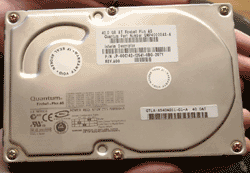 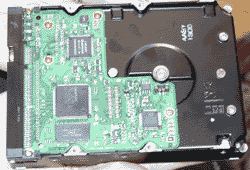 Fireball Plus AS 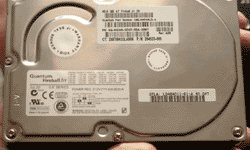 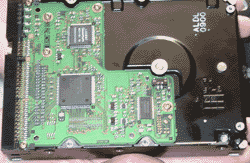 lct20 For this review we have chosen two models - Fireball Plus AS and lct20. The both extend a discs series with a spindle rotation speed equal to 7200 rpm and sub 7200 (i.e. 4500) rpm correspondingly. The cases are identical, they differ only in stickers. The record density as compared with their predecessors - Fireball Plus LM and lct15 - increased up to 20 GBytes per platter, other features remain the same: Quiet Drive Technology, Quantum's Shock Protection System II and Data Protection System. A new thing is optional hydrodynamic bearings for noise reduction. The difference in my opinion is practically inaudible. Samsung 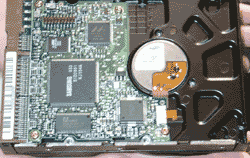 SpinPoint V20400 Here we have a model from the last series - the SpinPoint V20400 (SV20400) with 5400 rpm spindle speed. Since it is the first modern model of Samsung hard discs in our tests I will describe it a bit deeper. A set is standard, but names are different.

ImpactGuard prevents a contact of a head with a disc in case of bumps. Seagate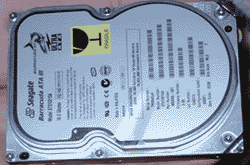 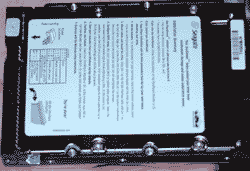 Barracuda ATA III 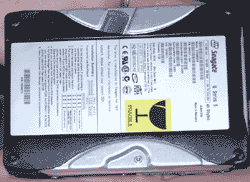 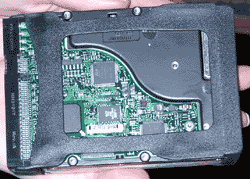 U5 As for Seagate products today we are dealing with two hits - Barracuda ATA III, is the next specimen of the 7200 rpm series, and a successor of the "U" series - U5 series. As I have already said, it is only 10 GBytes. As usual there is 3D Defense System, optional liquid bearings. For U5 - a proprietary plastic shell - Seashell. Full data on all series can be found in the table. TestsFirst, I will describe what has happened with our test system. We have received quite a lot of letters where you are complaining that the tests of modern discs are carried out on an outdated system (Chaintech 6BTM with CPU Intel Pentium II 400MHz). That's why we decided to change the testbed. As a base we took the i815E chipset, since it supports ATA/100 on the chipset level, plus Intel reputation, plus integrated video. Besides, we took Iwill WO2-R board due to the fact that Iwill products proved its stability. Onboard ATA/100 RAID-controller from American Megatrends played maybe a vital role (a test of this controller will soon appear on the site). As an operating system we took Windows 2000 Professional Service Pack 1. Here I followed one professional site devoted to storage devices - StorageReview. So, we can test discs with NTFS and FAT32 under control of one OS. Here you can see what it poured into:
Now up tests. The Adaptec ThreadMark test doesn't give a real idea on disc speed. First, it gives out one average result, and it's difficult to understand to what reason the results of one disc are higher, and of another are lower. Besides, when testing modern discs a correlation of results of Adaptec ThreadMark test with Ziff-Davis WinBench results (a test which reflects completely both physical characteristics of the disc speed (speed of linear reading and access time) and results of operating with a set of standard applications) have disappeared. That's we replaced Adaptec ThreadMark by Intel IOMeter test. Unlike WinBench, this test is entirely synthetical, what on one hand gives freedom to a tester, and on the other hand, allows measuring everything (i.e. to set a such test configuration which will never be in real operation of a HDD). If you want to get some details on this test, see the description. To cut a long story short, I should say that we used three access patterns, corresponding to usage of a disc in a Workstation, File Server or Database server. There are 5 load levels which are differing in the number of simultaneous requests (Outstanding I/O).
So, today we have the following tests: Ziff-Davis WinBench 99 for FAT32 and NTFS (three measurements, one average result) and Intel IOMeter (measurements on a unformatted disc). As a reference point for the test we used IBM DTLA disc. Now you can see the results (traditionally we are starting with WinBench). So, look at the physical characteristics of the discs. 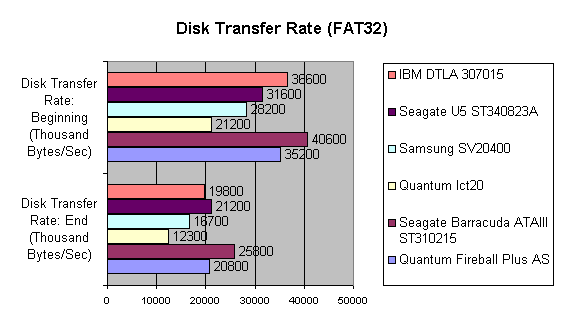  Well, the lct20 is behind all the others. It was expected due to the lower rotation speed with the same record density. The Seagate shows the highest linear speed in its category - we have already got used to it. Unexpectedly , the DTLA has outperformed the Quantum Fireball Plus AS in linear read speed.  The most wonderful thing is that the IBM left all other discs behind in access time, the Seagate comes nearly the last!!! According to the specs, the Barracuda ATA III has an access time equal to 8.9 (Average Seek) + 4.16 (Average Latency) ms = 13.06, and not 14.8 ms, the U5 has it 8.9 + 5.6 = 14.5, and we see 19.1 (and even 19.5 in NTFS)! For the Quantum Fireball Plus AS the specs indicate 8.5 + 4.17 = 12.67, we have reached 13.5 ms. Not too much. Now let's turn to the graphs.  Quantum Fireball Plus AS (FAT32) 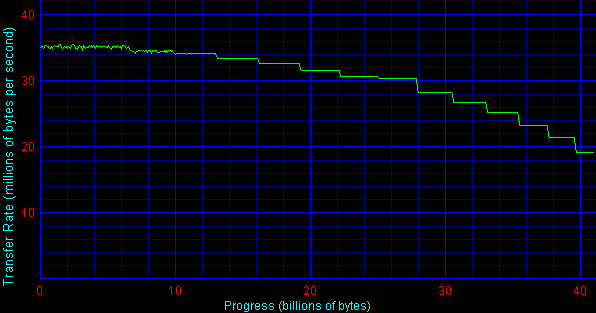 Quantum Fireball Plus AS (NTFS) The Quantum Fireball Plus AS attracts attention to its broken line for the first 10 GBytes. Since I have received an unpacked disc, it may be a consequence of active testing. 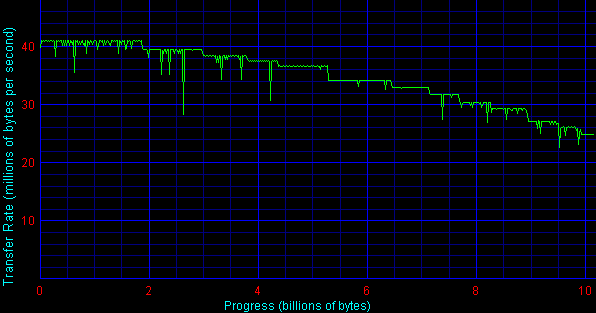 Seagate Barracuda ATA III ST310215A (FAT32) 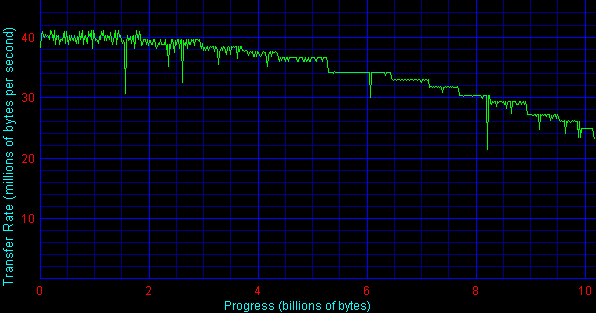 Seagate Barracuda ATA III ST310215A (NTFS) Here the situation is even worse. Now we are applying to the discs with the spindle speed equal to 5400 rpm and lower.  Quantum lct20 (FAT32) 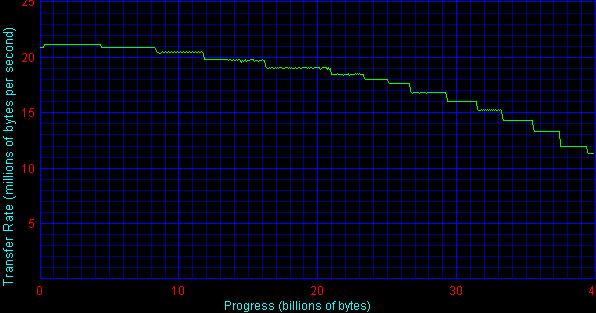 Quantum lct20 (NTFS) The Quantum lct 20 shows almost ideal graphs. 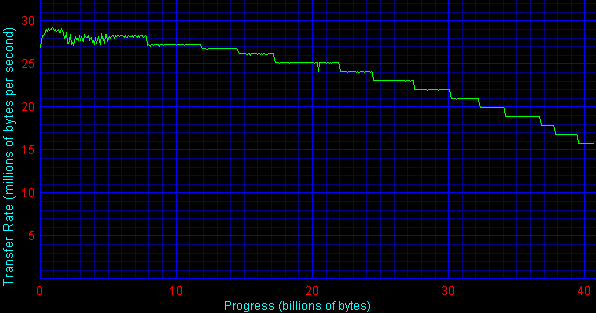 Samsung SV4084H (FAT32) 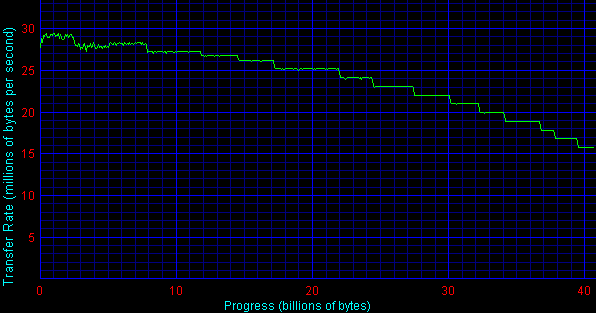 Samsung SV4084H (NTFS) The Samsung. Everything is good but for the first part of the graph. It seems that high record density and low price were achieved at the expense of quality. However, it is not so bad, the disc is not intended for the high-level market.  Seagate U5 ST340823A (FAT32)  Seagate U5 ST340823A (NTFS) The Seagate U5. The graph is perfect. Now let's see how the contestants are dealing with applications.  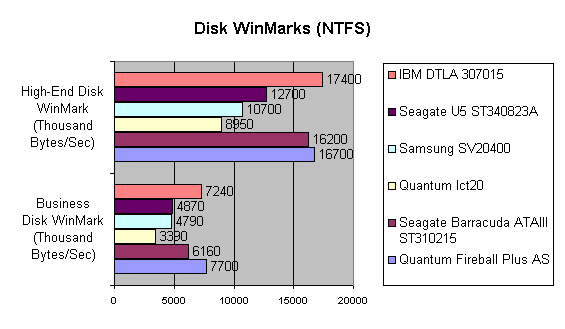 Among the discs with 7200 rpm the Quantum Fireball Plus AS managed to outperform the Barracuda ATA III on the Business Disk WinMark probably due to the lower access time. Moreover, the Seagate lagged behind the IBM and the DTLA. And on the High-End Disk WinMark test the Barracuda could win only over the Quantum and only due to the usage of FAT32. I think that it happened because a tree-like directory structure in the NTFS implies the higher number of head movements. The IBM DTLA is beyond the competition. This advantage, though, with FAT32 used was reached mainly due to incredible results in the FrontPage 98. Nearly 160 thousand bytes per second!!! It's closer to the ATA/200. Note that the other discs exceeded theoretical threshold. Like in the case of the discs with ATA/66, it can be explained by operation of cache system of the Windows 2000 itself. The fact that the results with the NTFS are decent opposes it, though. Now we are turning to the slower discs. The lct20 is a clear outsider (128 KBytes buffer - it is especially noticeable on the applications such as Adobe Photoshop working with huge files), the U5 is a clear favorite (it managed to win even with the relatively low access time). The advantage is quite big on all applications and with usage of the both file systems. The Samsung is just in the middle. The results' table can be checked here. The most mysterious test is Intel IOMeter. First, let's see how our discs will act in the Workstation conditions.
The lower Average Response Time, the higher the number of transactions per time unit. And since Average Response Time depends on access time, the Seagate discs are inferior. Interestingly, that the U5 in some cases yields to the lct20. Since for each model there are the same five tables I decided to put the results on a separate page. Here I will make short conclusions. Server. Nothing has changed much. The only thing is that the Samsung leadership among 5400 discs has become unquestioning, it is faster even than the Barracuda ATA III, and with high load the disc comes forward. It is a good sign of high quality firmware. And the U5 could reach the lct 20 only with the maximum load. Database server. The Samsung is an absolute leader!!! The Seagate has stepped down yet more. It is quite a funny test but its sense is not still clear for me. I will be glad if you share your opinions, and now I will be guided by the Ziff-Davis. ConclusionThe long-awated Barracuda ATA III turned to be a disc which entirely corresponds to Seagate - high linear read speed comes together with rather big access time. If you are working with huge streams I can recommend this disc. The Quantum Fireball Plus AS suits nearly all of you. Among 5400 disc the Seagate U5 remains a leader, despite the IOMeter results. Since the Samsung costs not much, the disc will perfectly suit entry-level office systems. By the way, as for reliability of the Samsung discs they say that there is 1-1.5% of the discs returned during the guarantee period (3 years). As for the lct20 I can say nothing encouraging. Write a comment below. No registration needed!
|
Platform · Video · Multimedia · Mobile · Other || About us & Privacy policy · Twitter · Facebook Copyright © Byrds Research & Publishing, Ltd., 1997–2011. All rights reserved. | ||||||||||||||||||||||||||||||||||||||||||||||||||||||||||||||||||||||||||||||||||||||||||||||||||||||||||||||||||||||||||||||||||||||||||||||||||||||||||||||||||||||||||||||||||||||||||||||||||||||||||||||||||||||||||||||